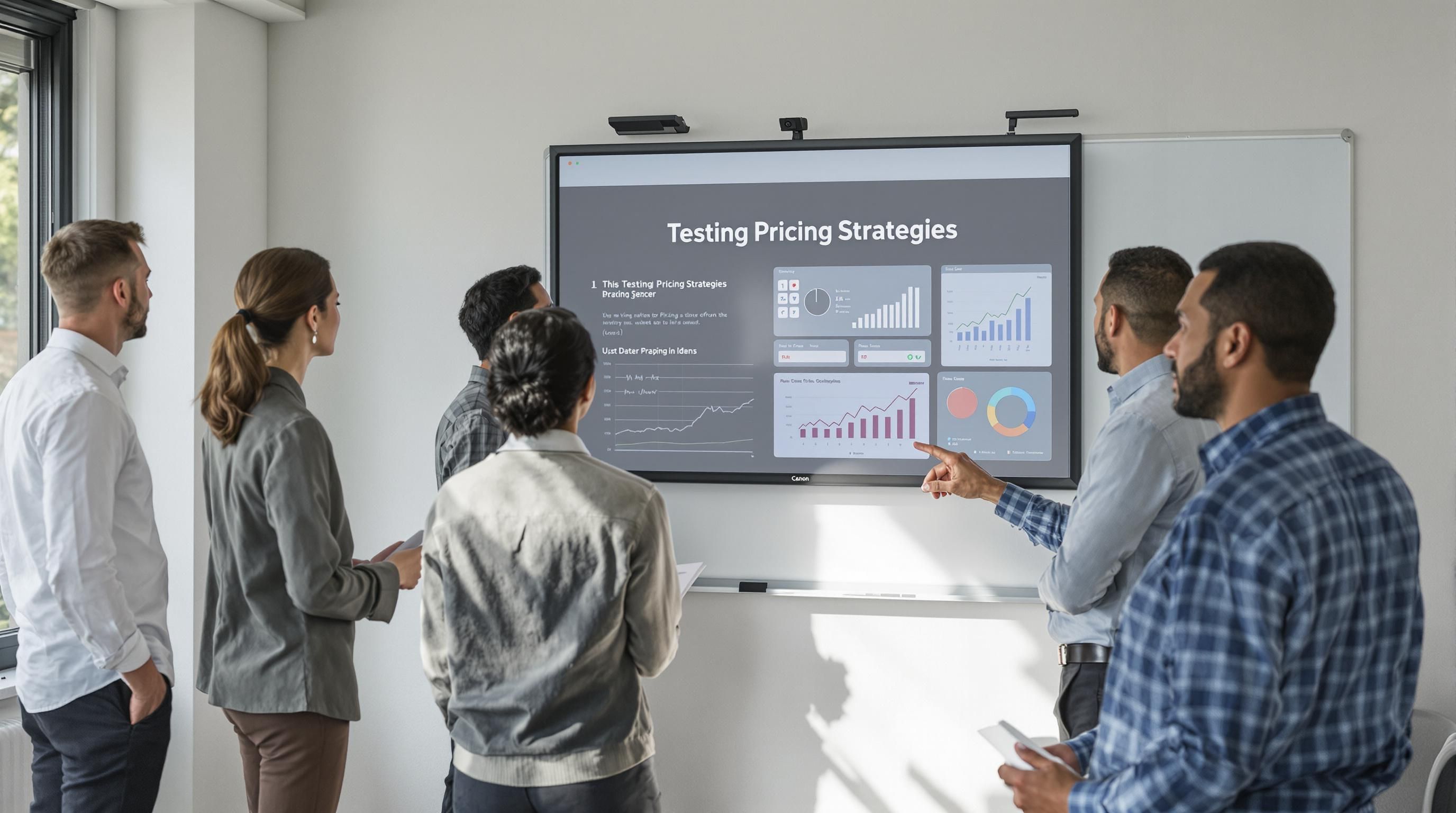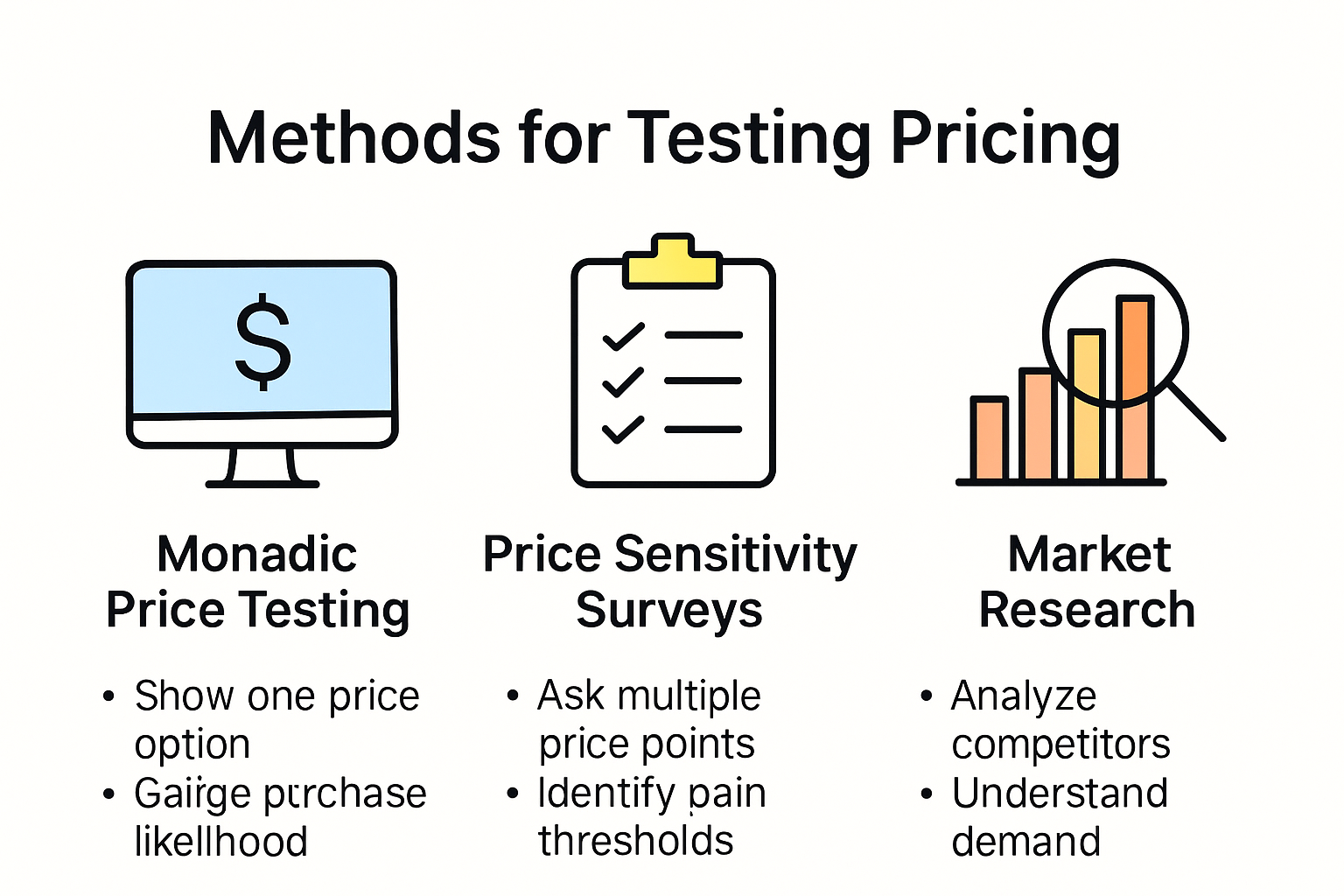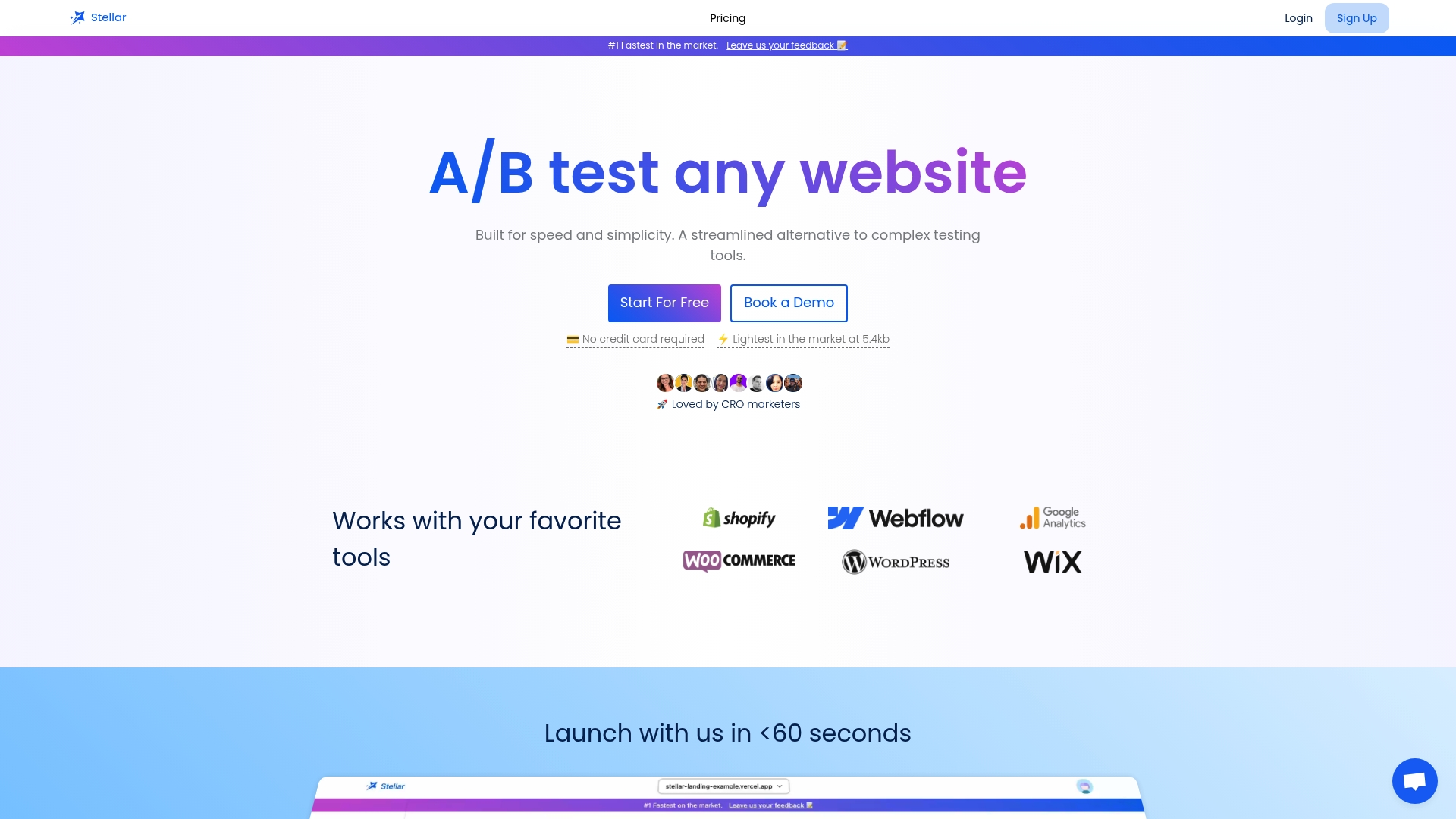
Testing Pricing Strategies for CRO Success in 2025

Pricing experiments are driving real business results as companies realize they cannot afford to guess at what customers are willing to pay. Sounds like risky guesswork, right? Not with the data—a 55 percent increase in turnover was reported by an Italian e-commerce company simply by switching to data-driven price testing over human intuition. This kind of transformation is happening faster than most expect, and the next breakthrough in conversion rate optimization could come down to whose pricing tests are smarter, not whose products are flashier.
Table of Contents
- Why Testing Pricing Strategies Matters
- The Economic Impact Of Strategic Pricing Experiments
- Conversion Rate Optimization Through Pricing Experiments
- Building A Data Driven Pricing Framework
- Top Methods For Testing Pricing Strategies
- Monadic Price Testing Techniques
- Price Sensitivity Survey Methods
- Market Research And Customer Behavior Analysis
- Tools And Metrics For Measuring Price Tests
- Statistical Measurement Approaches
- Conversion Rate Optimization Metrics
- Advanced Experimentation Methodologies
- Real-World Examples And Actionable Takeaways
- E-Commerce Pricing Innovation
- Airline Industry Pricing Personalization
- Strategic Implementation Framework
Quick Summary
| Takeaway | Explanation |
|---|---|
| Testing prices improves revenue potential. | Systematic pricing experiments lead to a better understanding of customer behavior and higher conversion rates. |
| Utilize advanced statistical methods. | Employ rigorous statistical techniques to measure outcome effectiveness and gain deeper insights from pricing experiments. |
| Adopt continuous pricing optimization. | Viewing pricing strategy as an ongoing process allows businesses to adapt to market changes and optimize results over time. |
| Leverage monadic price testing for insights. | This method invites consumers to react to single price points, providing clear insights into perceived value without distractions. |
| Embrace data-driven decision making. | Companies should prioritize analytical technologies to develop flexible pricing models and continuously refine their pricing strategies. |
Why Testing Pricing Strategies Matters
Pricing is not just a number on a tag. It's a critical strategic lever that can make or break your business's conversion rates and overall revenue potential. Testing pricing strategies represents a sophisticated approach to understanding customer behavior, optimizing revenue, and creating competitive advantage in increasingly complex market environments.
The Economic Impact of Strategic Pricing Experiments
Pricing precision determines more than just immediate sales. Research from a dynamic pricing study demonstrates that implementing advanced pricing strategies using deep reinforcement learning can dramatically enhance revenue generation. This isn't theoretical speculation - it's empirical evidence of how strategic pricing experiments directly translate into financial performance.
Businesses that engage in systematic pricing tests gain multiple competitive advantages. They can:
- Understand customer price sensitivity more accurately
- Identify optimal price points that maximize conversion rates
- Adapt quickly to changing market dynamics
The complexity of modern digital markets demands a more nuanced approach to pricing. Traditional static pricing models are becoming obsolete as consumers expect personalized, dynamic pricing experiences that reflect real-time value perceptions.
Conversion Rate Optimization Through Pricing Experiments
Converting potential customers into paying clients hinges critically on perceived value and pricing strategy. An online learning algorithm study highlighted how volume discounts and dynamic pricing techniques can substantially increase turnover by carefully testing different pricing configurations.
Successful pricing experiments go beyond simple A/B testing. They require a comprehensive understanding of:
- Psychological pricing triggers
- Competitive market positioning
- Customer segment price elasticity
Marketers who invest time in rigorous pricing strategy testing gain actionable insights that transform raw data into strategic advantages. By systematically exploring different pricing models, businesses can uncover hidden opportunities for growth that would remain invisible through traditional approaches.
Building a Data Driven Pricing Framework
Testing pricing strategies is not a one time event but an ongoing process of continuous optimization. Marketing experiments research suggests starting with higher prices and strategically reducing them based on empirical test results can help identify the most effective pricing strategy.
Key considerations for building a robust pricing experimentation framework include:
- Establishing clear measurement metrics
- Creating controlled testing environments
- Developing rapid iteration capabilities
- Maintaining flexibility in pricing approaches
Ultimately, businesses that treat pricing as a dynamic, data driven discipline will outperform competitors still relying on intuition or historical pricing models. The future of successful pricing strategies lies in continuous testing, learning, and adapting to evolving market conditions.
By embracing a scientific approach to pricing, organizations can transform what was once considered a mundane operational task into a powerful strategic tool for driving growth and customer engagement.
Top Methods for Testing Pricing Strategies
Navigating the complex world of pricing requires sophisticated testing methodologies that go beyond simple guesswork. Businesses need robust approaches to uncover the most effective pricing strategies that maximize conversion rates and revenue potential.

Monadic Price Testing Techniques
Monadic price tests represent a powerful method for understanding precise customer reactions to specific price points. This approach involves presenting respondents with a single product-price combination, allowing for deep insights into perceived value without comparative distractions.
Key advantages of monadic price testing include:
- Isolated price perception analysis
- Targeted segment understanding
- Precise value assessment before market launch
Businesses can leverage this method to:
- Evaluate customer willingness to pay
- Understand price sensitivity across different audience segments
- Validate pricing strategies before full market implementation
The methodology proves particularly effective when businesses need granular insights into how specific customer groups perceive product pricing. By removing comparative context, researchers can capture more authentic and nuanced responses about price perceptions.
Price Sensitivity Survey Methods
The Van Westendorp Price Sensitivity Meter offers a sophisticated survey-based approach to pricing research. This method asks consumers strategic questions about price perceptions, uncovering critical insights into acceptable price ranges.
The technique explores four key price point perspectives:
- Point of Indifference: Where price seems reasonable
- Point of Cheapness: Where price seems suspiciously low
- Point of Expensive: Where price starts feeling too high
- Point of Ridiculous: Where price becomes completely unacceptable
By mapping these perspectives, businesses can identify optimal pricing windows that balance perceived value with customer affordability.
Market Research and Customer Behavior Analysis
Government business resources emphasize the critical importance of comprehensive market research in pricing strategy development. This approach involves deep investigation of customer purchasing behaviors, competitive landscapes, and value perceptions.
Effective market research for pricing strategies includes:
- Analyzing customer demand patterns
- Investigating prices paid for similar products
- Understanding valued product features
- Mapping competitive pricing landscapes
Successful pricing strategies emerge from a holistic understanding of market dynamics. By combining quantitative data with qualitative insights, businesses can develop pricing approaches that resonate with target audiences while maintaining competitive positioning.
The most sophisticated pricing strategies transcend simple numerical calculations. They represent a nuanced understanding of customer psychology, market positioning, and perceived value. Businesses that invest in rigorous testing methodologies gain a significant competitive advantage in increasingly complex market environments.
Here is a table comparing the three main methods for testing pricing strategies described above. This comparison helps you quickly identify each method's approach, focus, and best use cases.
| Method | Core Approach | Primary Focus | Best Use Case |
|---|---|---|---|
| Monadic Price Testing | Present single product-price to respondent | Isolated price perception | Assessing customer willingness to pay for new SKUs |
| Van Westendorp Survey | Consumer survey on price acceptability | Perceived price thresholds/range | Determining acceptable price range pre-launch |
| Market Research & Behavior | Analysis of customer and market data | Segment behavior & competitor pricing | Benchmarking/setting pricing in competitive markets |
Tools and Metrics for Measuring Price Tests
Measuring the effectiveness of pricing strategies requires sophisticated tools and precise metrics that capture nuanced customer responses beyond simple revenue calculations. Successful price testing demands a comprehensive approach that integrates multiple measurement techniques and advanced analytical frameworks.
Statistical Measurement Approaches
Advanced statistical research reveals critical complexities in measuring price test outcomes. Researchers must carefully consider dependencies between transaction values and sizes to ensure accurate measurement and minimize uncertainty.
Key statistical measurement techniques include:
- Confidence interval analysis
- Variance comparison metrics
- Transaction size correlation studies
- Normalized revenue calculations
Understanding these measurement approaches helps businesses move beyond surface level interpretations. By applying rigorous statistical methods, organizations can extract deeper insights from pricing experiments and make more informed strategic decisions.
Conversion Rate Optimization Metrics
Research on digital marketing conversion optimization highlights several critical metrics for evaluating price test effectiveness:
- Conversion rate percentage
- Average order value
- Customer acquisition cost
- Revenue per visitor
- Price sensitivity index
These metrics provide a multidimensional view of pricing strategy performance. They help businesses understand not just immediate revenue impacts but long term customer behavior patterns and economic implications.
Advanced Experimentation Methodologies
Online controlled experiment research emphasizes the importance of robust experimental design in price testing. Successful price tests require careful consideration of:
- Precise statistical significance calculations
- Comprehensive sample size determination
- Controlling for external market variables
- Implementing rigorous randomization techniques
Businesses must approach price testing as a scientific discipline. This means developing structured experimental protocols that minimize bias and maximize insight generation. By treating pricing experiments with the same rigor as scientific research, organizations can develop more sophisticated and effective pricing strategies.
The most successful pricing strategies emerge from a holistic approach that combines advanced statistical analysis, comprehensive metric tracking, and continuous experimental refinement. Businesses that invest in sophisticated measurement tools and methodologies gain a significant competitive advantage in understanding and optimizing their pricing models.
Below is a table summarizing the key metrics and statistical tools for measuring the impact of pricing tests. This provides a quick reference for what to track and analyze during your experimentation process.
| Metric/Tool | Purpose |
|---|---|
| Conversion Rate Percentage | Measures proportion of visitors who convert |
| Average Order Value | Calculates average revenue per transaction |
| Customer Acquisition Cost | Tracks spend required to acquire new customers |
| Revenue per Visitor | Shows revenue impact per site visitor |
| Price Sensitivity Index | Quantifies customer response to price changes |
| Confidence Interval | Assesses statistical significance in price results |
| Variance Analysis | Evaluates variability and reliability |
Real-World Examples and Actionable Takeaways
Transforming pricing strategy research into practical applications requires examining concrete examples that demonstrate the power of sophisticated testing methodologies. Real-world case studies provide invaluable insights into how businesses can effectively implement and benefit from advanced pricing experiments.
E-commerce Pricing Innovation
A groundbreaking study on dynamic pricing conducted on Tmall.com reveals remarkable outcomes of advanced pricing strategies. By implementing deep reinforcement learning techniques, the research team achieved significant performance improvements:
- Conversion rate increase: 36%
- Revenue per offer enhancement: 10%
This example illustrates how artificial intelligence can revolutionize pricing approaches. The key takeaway is that businesses should:
- Invest in advanced analytical technologies
- Develop adaptive pricing models
- Continuously experiment with intelligent pricing algorithms
The research demonstrates that moving beyond traditional pricing methods can unlock substantial economic potential. Companies willing to embrace data driven approaches can gain competitive advantages through more sophisticated pricing strategies.
Airline Industry Pricing Personalization
Research in the airline industry showcased the power of context aware dynamic pricing. By developing personalized pricing models based on individual customer interactions, researchers achieved remarkable results:
- Conversion rate improvement: 36%
- Revenue per offer increase: 10%
This case study highlights critical actionable strategies for businesses:
- Understand individual customer contexts
- Develop flexible pricing frameworks
- Implement machine learning driven personalization
- Create adaptive pricing mechanisms
Successful pricing strategies require deep understanding of customer behavior and technological capabilities to implement sophisticated pricing models.
Strategic Implementation Framework
An innovative online learning algorithm study demonstrated remarkable pricing optimization in a four month experiment with an Italian e-commerce company. The algorithmic approach generated extraordinary results:
- Turnover increase: 55% compared to human pricing specialists
- Product coverage: Over 1,200 products adopted
Key actionable takeaways for businesses include:
- Embrace data driven decision making
- Develop robust testing infrastructures
- Create cross functional teams combining technical and marketing expertise
- Invest in continuous learning and experimentation
The most successful pricing strategies emerge from a combination of advanced technological capabilities, deep market understanding, and a commitment to continuous improvement. Businesses that view pricing as a dynamic, experimental discipline will be best positioned to thrive in increasingly complex market environments.

Ultimately, effective pricing is not about finding a single perfect price point but about creating adaptive systems that can quickly respond to changing market conditions and customer behaviors. The organizations that master this approach will gain significant competitive advantages in their respective industries.
Frequently Asked Questions
What are the benefits of testing pricing strategies?
Testing pricing strategies helps businesses understand customer behavior, optimize revenue, and identify optimal price points that enhance conversion rates, leading to increased sales.
How can advanced statistical methods improve pricing experiments?
Advanced statistical methods allow for more accurate measurement of pricing outcomes by analyzing transaction values, confidence levels, and revenue patterns, providing deeper insights beyond simple revenue metrics.
What is monadic price testing, and why is it important?
Monadic price testing involves presenting customers with a single price point to gauge their response. This method isolates price perception, allowing businesses to understand customer willingness to pay without comparative distractions.
How can companies continuously optimize their pricing strategies?
Companies can continuously optimize pricing strategies by treating price testing as an ongoing process, establishing clear measurement metrics, creating controlled environments for testing, and being adaptable to changing market conditions.
Unlock Revenue Growth with Effortless Price Testing
Are you frustrated by guessing or struggling with complex tools while trying to pinpoint the price that converts? The article shows how data-driven pricing experiments can be the difference between falling behind and fueling a record jump in turnover. If you recognize the power of ongoing price optimization, it is time to use a platform that turns ideas into action without slowing down your site or requiring technical staff.

Stellar lets you roll out advanced A/B price testing in minutes. Imagine capturing insightful analytics, using a no-code visual editor, and acting on real-time data to refine your pricing strategies. Start today and let your team focus on smart experiments, not tool headaches. See how Stellar can help with conversion rate optimization and profitability right from your first test on Stellar's main site. Make every pricing decision count by launching your own experiments now. The faster you act, the quicker you unlock new growth.
Recommended
Published: 7/29/2025
